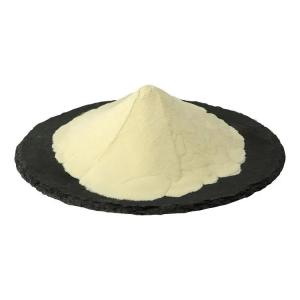News list
News Center
Hot Product
News
Phosphoric acid in responsible food production
Time:2025-10-29
1. Introduction
Phosphoric acid (H₃PO₄) is a widely used inorganic acid in the global food industry. Known for its acidity regulation and preservative capabilities, it plays a key role in maintaining product stability and taste balance. In the context of sustainable and responsible food production, phosphoric acid’s use must align with principles of safety, efficiency, and environmental stewardship.
2. Role of Phosphoric Acid in Food Processing
Phosphoric acid serves multiple functions across various food categories. It is commonly used as an acidity regulator in beverages, dairy products, and processed foods to maintain pH stability and enhance flavor. Additionally, it assists in the prevention of microbial growth in certain formulations, helping ensure product safety and extended shelf life.
3. Quality Control and Safety Considerations
Responsible use of phosphoric acid in food manufacturing requires strict adherence to food-grade purity standards. Regulatory bodies such as the U.S. Food and Drug Administration (FDA) and the European Food Safety Authority (EFSA) have established clear limits for its use in consumable products. Continuous monitoring of dosage, concentration, and final product composition ensures consumer safety and consistent product quality.
4. Sustainability in Production and Supply Chain
Sustainability concerns are reshaping the chemical production landscape. Manufacturers of phosphoric acid are increasingly adopting cleaner production processes, such as recovering phosphorus from renewable sources and minimizing industrial emissions. Responsible sourcing of raw phosphate materials and efficient waste management are crucial steps toward reducing the ecological footprint of the food supply chain.
5. Innovation and Future Directions
Emerging trends in food technology encourage the exploration of greener alternatives and improved formulations. Research is focused on optimizing phosphoric acid’s use through precision dosing technologies and integrating it within circular production systems. Collaboration between food scientists, environmental engineers, and policymakers is key to achieving a balance between food functionality and environmental responsibility.
6. Conclusion
Phosphoric acid remains a vital component in modern food processing, offering functionality and reliability. However, its use in responsible food production demands a careful balance between technological benefits, safety compliance, and sustainability goals. Through innovation and transparent practices, the food industry can continue to harness the value of phosphoric acid while contributing to a more responsible and sustainable future.
Phosphoric acid (H₃PO₄) is a widely used inorganic acid in the global food industry. Known for its acidity regulation and preservative capabilities, it plays a key role in maintaining product stability and taste balance. In the context of sustainable and responsible food production, phosphoric acid’s use must align with principles of safety, efficiency, and environmental stewardship.
2. Role of Phosphoric Acid in Food Processing
Phosphoric acid serves multiple functions across various food categories. It is commonly used as an acidity regulator in beverages, dairy products, and processed foods to maintain pH stability and enhance flavor. Additionally, it assists in the prevention of microbial growth in certain formulations, helping ensure product safety and extended shelf life.
3. Quality Control and Safety Considerations
Responsible use of phosphoric acid in food manufacturing requires strict adherence to food-grade purity standards. Regulatory bodies such as the U.S. Food and Drug Administration (FDA) and the European Food Safety Authority (EFSA) have established clear limits for its use in consumable products. Continuous monitoring of dosage, concentration, and final product composition ensures consumer safety and consistent product quality.
4. Sustainability in Production and Supply Chain
Sustainability concerns are reshaping the chemical production landscape. Manufacturers of phosphoric acid are increasingly adopting cleaner production processes, such as recovering phosphorus from renewable sources and minimizing industrial emissions. Responsible sourcing of raw phosphate materials and efficient waste management are crucial steps toward reducing the ecological footprint of the food supply chain.
5. Innovation and Future Directions
Emerging trends in food technology encourage the exploration of greener alternatives and improved formulations. Research is focused on optimizing phosphoric acid’s use through precision dosing technologies and integrating it within circular production systems. Collaboration between food scientists, environmental engineers, and policymakers is key to achieving a balance between food functionality and environmental responsibility.
6. Conclusion
Phosphoric acid remains a vital component in modern food processing, offering functionality and reliability. However, its use in responsible food production demands a careful balance between technological benefits, safety compliance, and sustainability goals. Through innovation and transparent practices, the food industry can continue to harness the value of phosphoric acid while contributing to a more responsible and sustainable future.


 CN
CN





